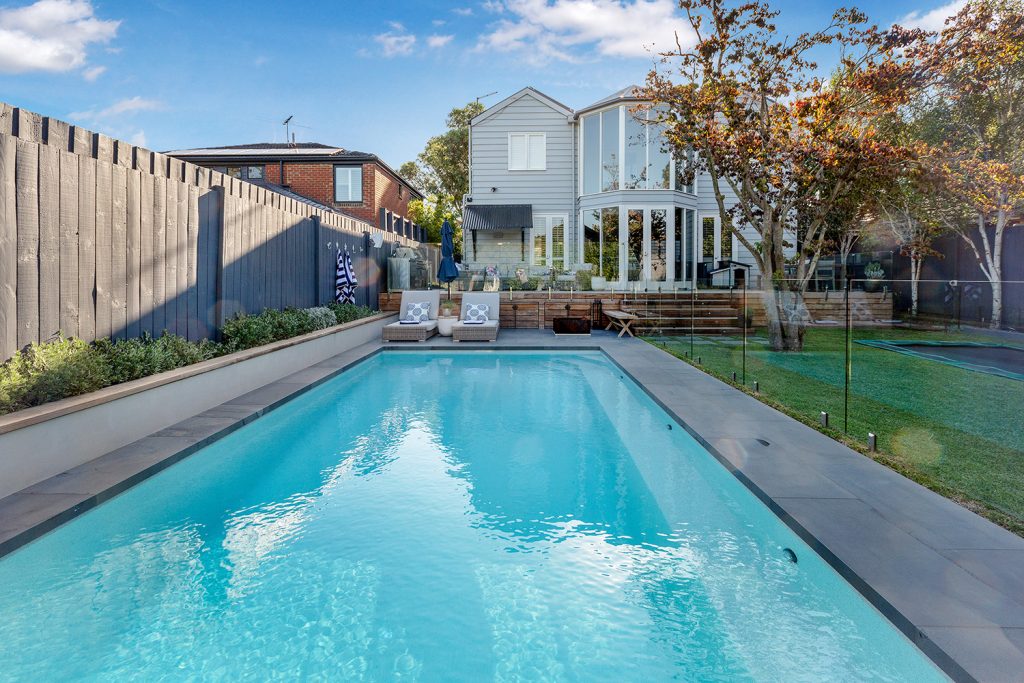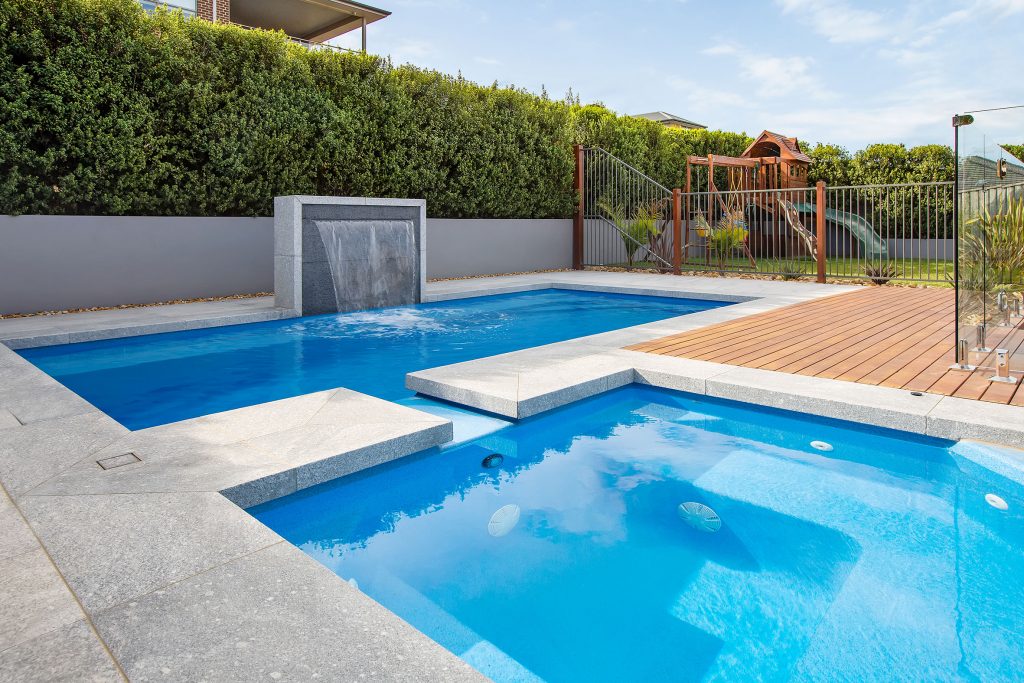“I’m Arranging a New Pool Construction… Should I Choose a Fibreglass Pool or a Concrete Pool?”
So you have decided you are sick of sweating it out over an Aussie summer and have made the decision to purchase a swimming pool… But how do you know what type of pool to get?
There are so many things to consider when you are making an investment in your new pool or spa, so we have put together some information on where to start when it comes to choosing between a fibreglass pool and a concrete pool.
Considerations for Concrete vs Fibreglass Pool:
- Aesthetics: What do you want your pool to look like?
- Installation times: When do you want your pool swim ready?
- Cost: What is your budget?
- Swimming experience: What would you like your swimming experience to feel like?
- Maintenance: How much effort do you want to put in to keeping your pool healthy and clean?
Aesthetics
First of all, it is important to know what you imagine your pool to look like!
Do you see yourself sitting in a pool with sparkling tiles or do you want a smooth, vibrant colour guard pool that doesn’t fade?
Do you want a standard shape or size, or do you see a unique custom designed shape? These questions are all very important when deciding on fibreglass or concrete pools.
A concrete pool can be customised to almost any shape or size and almost any interior surface covering. With a concrete pool you could have tiles, pebbles, plaster, paint and even glass beading. The options are endless, and between the shape and interior surface finishing you select, it is unlikely you will see another pool just like yours anywhere else.
Keep in mind it is important to imagine what your chosen surface finishing would look like with your landscaping and in all light types as your chosen finishing will have the largest impact on the overall appearance of your pool.
It can be hard to imagine what your small sample supplied by your pool builder would look like on a large pool filled with water though, which is why it is best to visit a pool builder that has a Display Centre.
Fibreglass pools are not as easily customisable as concrete pools. However, they are becoming increasingly more popular these days, so you will find a large range of colour options, shapes and sizes available in the Australian Market, including matching spa and pool shells.
The only thing to keep in mind is that the fibreglass pool shells do need to be transported by road a lot of the time so the maximum width you would find available is 4.5m (which is normally plenty for the average Australian back yard). If you are looking at getting a wider pool you would be best to explore the concrete option.
Below are some ideas on just how different fibreglass pool shells can look. With so many options available you will be sure to find one that suits your needs. The other bonus about a fibreglass pool is that many manufacturers now offer a warranty on the colour as well as the shell, meaning it won’t fade… Your pool can be just as vibrant now as it is in 30 years time!



Installation Times
Another key difference between a fibreglass pool and a concrete pool is how quickly you need to be swimming.
A fibreglass pool can be installed and ready to use within a week because they are manufactured in a facility instead of your house.
Whereas a concrete pool, due to the customised, sometimes complex installation in your back yard, can take months to implement and weeks to cure.
It is important to note that the whole process for any pool does take longer though, as you need to arrange contracts, access, building permits, fencing, payments and ordering of equipment and supplies, etc before the commencement of the pool construction. If you would like to learn more about installation times, read how long does it take to build a pool?
Cost
Of course it depends on your location, access and size of your new pool build, however in broad terms fibreglass pools are generally a lot cheaper than concrete pools, due to the speedy installation time. They also require less maintenance and cleaning due to their robust, smooth material.
Many fibreglass pool shells come with a lifetime warranty, like ours, which is much cheaper and a lot less hassle than resurfacing your concrete pool every 15-20 years.
Swimming Experience
Your swimming experience could differ depending on the type of pool you choose. Due to the smooth and safe nature of the fibreglass, it is often the preferred choice for families.
Concrete pools can have rough surface finishings such as plaster or pebbles, where skin grazing and toe stubbing can become a regular occurrence if you are not careful. The rough surface finishings can also trap unwanted nasty bacteria, mould and algae that can be very tough to get rid of.
Maintenance
Fibreglass pools require less upkeep than their opposition. The fibreglass pool shells currently manufactured often come with a lifetime warranty on the shell and the colour guard and don’t need to be replaced in just that- a lifetime! You can read more on our pool and spa shells here.
On the other hand, concrete pools do require resurfacing every 15-20 years depending on usage and maintenance.
The use of a salt chlorinator on a concrete pool can also shorten resurfacing time, as the salt is more abrasive on the concrete. Salt will not affect fibreglass in the same way. If you choose not to treat your pool with the assistance of a salt chlorinator, it can get messy and more expensive manually handling the chlorine. Read our article on salt chlorination for more information here.
Concrete pools require higher levels of calcium in the water compared to fibreglass pools. If this isn’t perfectly controlled you can get pitting on concrete surfaces and etching of the concrete. It can also dissolve the grouting between the tiles (if relevant).
Another impact of incorrect calcium levels are calcium stains, which can occur in both concrete and fibreglass pools, but are more likely to appear in pools finished with plaster.
When it comes to day-to-day maintenance a fibreglass pool is easier to maintain because of its non-porous gelcoat surface. This means less chemicals, less money and less effort!
Summary
In summary, if you are after a custom designed pool or spa in a unique shape, or with specific surface coverings like tiles or pebbles, you should consider a concrete pool. You would have to invest significant time and money to install and maintain a concrete pool now and in the future, but this is worth it for someone who wants the custom design they have been dreaming of!
If you are looking for something with less maintenance and lower costs you may consider the family friendly fibreglass pool or spa.
Not only is a fibreglass pool less work, but installation is much quicker than concrete, so you can be swimming sooner! It is also safer for the whole family as there are no rough edges like those that can be found in a concrete pool. Their growing popularity means no longer do you have limited options in size and colour, you are bound to find a fibreglass pool to suit your needs.
